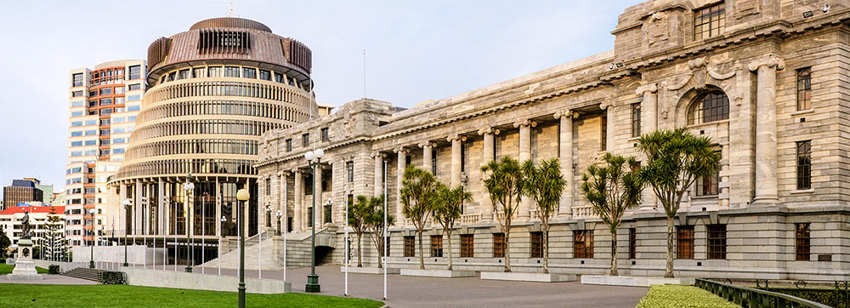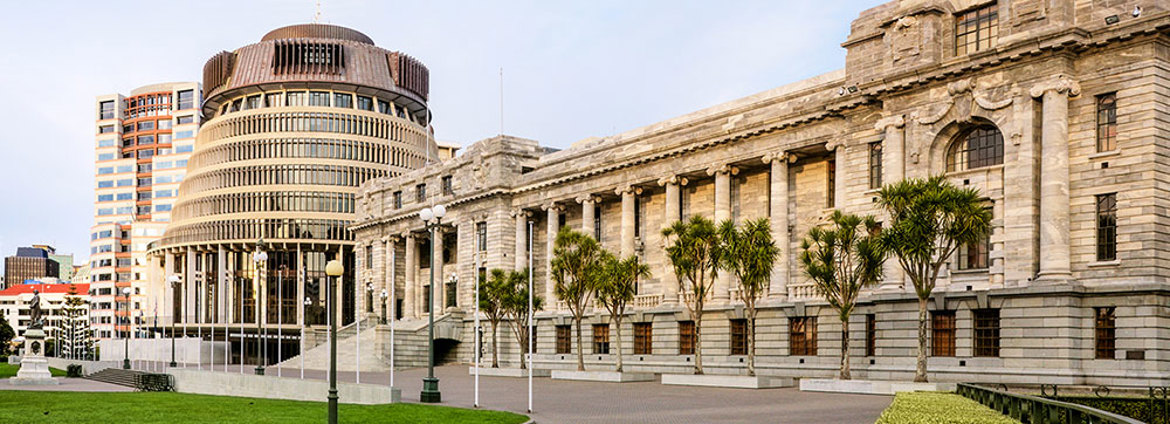Following last week's eagerly anticipated announcement by the Prime Minister, New Zealand entered Alert Level 3 as part of its COVID-19 response just before midnight on Tuesday 28 April, and will stay there for at least two weeks.
As has always been the case, the COVID-19 alert levels have no status at law. Rather, the different rules that apply at the different alert levels have been put in place through the exercise of various legal powers, including in particular powers under the Health Act 1956, the Epidemic Preparedness Act 2006, and the Civil Defence Emergency Management Act 2002.
The key legal mechanism used to move New Zealand to Alert Level 3 has been the issue of the Health Act (COVID-19 Alert Level 3) Order 2020 (L3 Order) under section 70 of the Health Act by Director-General of Health Ashley Bloomfield. This order replaces two previous Health Act orders relating to Alert Level 4 dated 25 March and 3 April (discussed in our updates here and here). The Health Act (COVID-19 Alert Level 3) Amendment Order 2020 was issued a few days later, to make minor adjustments to the rules in the original order.
A summary of the new rules that apply to businesses and individuals during Alert Level 3 is set out below.
Businesses
For Alert Level 4, the approach taken by the government and public officials was to require all business premises to be closed except for those used for 'essential businesses'. That term was defined in the relevant Health Act notice as meaning businesses "…essential to the provision of the necessities of life and those businesses that support them…". Which businesses fell into that fairly broadly defined category was set out (in some detail) on the Ministry of Business, Innovation, and Employment's (MBIE's) website. That website, and guidance on what constituted an 'essential businesses', was changed from time-to-time throughout Alert Level 4 as officials considered (and in some cases effectively approved) requests by different types of businesses to be categorised as essential.
In contrast, the L3 Order does not set out which types of businesses may operate at Alert Level 3. Rather, it sets out infection control requirements that apply to all New Zealand businesses, and provides that any business that can meet the requirements that apply to them may open. How the L3 Order does that is set out below.
First, the L3 Order categorises all businesses and services as falling into one of the following five categories:
- Category A businesses or services, which include:
- services provided by public sector agencies (eg, border services, arrest and custodial services, Police and Fire and Emergency Services, Oranga Tāmariki services)
- many health services, including services provided in public hospitals, by doctors, nurses, pharmacists, paramedics, medical lab workers, care and social workers, and emergency dental and optometry services
- transport services provided by small passenger vehicles (eg, taxis, couriers, and food delivery services)
- early childhood centres and schools
- vets and animal health services
- Category B businesses, which are supermarkets, dairies, petrol stations, pharmacies, and accommodation services
- Category C businesses and services, which are all other businesses and services except for public transport services and venue businesses, which are each their own category (see below)
- Public transport services, which includes ferry services and air services available to the public
- Venue businesses, which are businesses that provide venues for gatherings (as the main or an ancillary part of the business).
Second, the L3 Order:
- Describes six different types of infection control measures, being physical distancing, contact tracing, on-premises customer and client prohibition measures, food and drink prohibition measures, specific measures for education entities, and specific measures for venue businesses
- Specifies which of the different infection control measures applies to each of the five categories of businesses and services.
Third, the L3 Order requires that any business or service wanting to operate at Alert Level 3 must comply with the relevant infection control measures for its category. Any business or service that does not comply with the relevant infection control measures for its category must remain closed, although certain work may still be undertaken at the closed premises (eg, cleaning, maintenance).
Many privately-owned businesses in New Zealand fall into Category C. A key requirement imposed on such businesses by the L3 Order is that they must comply with on-premises customer and client prohibition infection control measures, which means that customer and clients:
- May only enter their premises to "…collect goods through a method that minimises physical contact…" (and, in doing so, only to the minimum extent necessary)
- May not enter a building
- Must not come into close personal contact with staff.
Some Category C businesses will be able to provide services in a way that meets the relevant infection control measures. As we know, many businesses will allow customers to place orders online or by phone, and pick up goods purchased without entering a building and with minimal contact with staff. However, there will be other businesses that cannot meet the relevant infection control requirements, such as (to give the example used in the L3 Order) hairdressing businesses that by their nature require close physical contact between customers and staff.
Other interesting points to note about the infection control measures imposed by the L3 Order are:
- All categories of businesses and services must comply with physical distancing measures, though the physical distance required is either one or two meters (depending on the category of business/services and whether one of the persons is involved in providing the business)
- Only Category C businesses and services and venue businesses are required to put in place contact tracing measures
- Venue businesses may only allow their premises to be used for weddings, civil unions, funerals, and tangi
- Supermarkets, dairies, petrol stations, and pharmacies, which are Category B businesses that are not subject to the 'on-premises customer and client prohibition' measure described above, are expressly prohibited from serving food and drink for consumption on premises (but there is no such prohibition on accommodation providers, who are the only other Category B business).
Although the L3 Order is more permissive for businesses that the order for Alert Level 4, whether or not businesses are able to operate at Alert Level 3 will depend in part on how the infection control measure requirements are interpreted by the relevant government agencies, and whether they consider that steps taken by businesses are sufficient to meet those requirements. Guidance for businesses is available on MBIE's website.
Individuals
It is still the case that, under Alert Level 3, everyone in New Zealand is required to remain isolated and quarantined in their homes, except for 'essential personal movement'. At Alert Level 4, 'essential personal movement' was very limited, with the key permitted activities being accessing or providing essential businesses (eg, supermarkets), and limited recreation outdoors (excluding activities such as swimming, hunting, and boating).
In contrast, at Alert Level 3, people are permitted to do the following:
- Access businesses and services that meet the infection control requirements for businesses described above, and are within the same region (including accessing such businesses and services for a fellow bubble-mate, or a vulnerable person such as an elderly relative)
- Work for such a business or service, provided:
- the work is in the same or an adjacent region to where the person lives
- the person works for a business, or provides a service, for which interregional travel is expressly permitted by the L3 Order (a list is set out in Part 3 of Schedule 2 of the order)
- Attend early childhood education, schools, tertiary institutions, and other 'education entities' that can comply with the relevant infection control measures, which includes that children, students, and teachers must be grouped in appropriately sized groups and that schools may only permit physical attendance of students in years 1 to 10
- Partake in recreational activities outside, which the L3 Order provides:
- must still involve physical distancing (ie, the two meter rule) and no congregating (ie, staying within your bubble and avoiding areas with too many other bubbles)
- can include going to outdoor areas that are readily accessible by car, and can be within the same or an adjacent region (which might mean travelling within a region to an easily accessible beach is permitted, but tramping in a more remote area of your region is not)
- cannot include a very limited range of activities (being flying manned aircraft, SCUBA diving, hunting in motor vehicles, hunting or killing game birds, sailing, and motorboat activities)
- can include any other outdoor activities that do not expose the person to danger, taking into account the person's experience and abilities, meaning activities such as swimming, tramping, and kayaking are all permitted for people with the necessary skills
- Exercising Māori customary rights to fishing and food gathering (subject to the same rules that apply to outdoor recreational activities)
- Attending a wedding or civil union in the same region, or a funeral or tangi in any region, provided no more than 10 people attend, food and drink is not served
- Creating an extended bubble, which involves two or more households acting as if they are one for the purpose of the L3 Order, which has been permitted under Alert Level 3 to enable people to keep connections with family or whānau, to give or receive help with caregiving, and support people who live alone or are otherwise isolated
- Relocating home or businesses premises (eg, moving houses), or relocating to a temporary or emergency home (eg, a women's refuge)
- Caring for pets or animals in the same or an adjacent region
- Accessing medical services, visiting people in rest homes, hospitals, or residential care facilities, and any travel necessary to preserve a person's life or safety
- Attending court, tribunal, and parole hearings
- For all people who recently arrived into New Zealand and have been subject to quarantine or managed isolation requirements, travelling directly home after the period of quarantine/isolation has ended
- For non-New Zealanders wanting to return to their homes, any travel necessary to get to their airport of departure (though the order expressly states that this will not include travel on Cook Strait ferries)
- On compassionate grounds, if permitted by the Director-General (which would be done on a case-by-case basis)
A map of the regions that New Zealand has been divided into for the purpose of the L3 Order (eg, for people who want to know what region the live in for work purposes) is available here.
The L3 Order does not include an expiry date, and so will remain in force until a new order is issued. Hopefully that will be an order moving New Zealand to Alert Level 2, though the Prime Minister has been clear that, although highly undesirable, there is always a possibility New Zealand will have to move back to Alert Level 4. There have also been suggestions that the move to Level 2 might need to be implemented through a change to the law, rather than the issuing of further orders by the Director-General. It is also of course possible that there will be amendments to the order, including if the requirements relating to infection control measures need to be clarified or expanded. As always, we continue to watch with interest.









